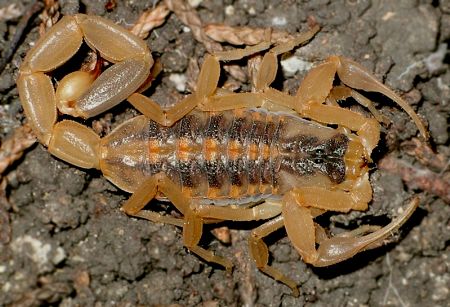OTHER NAMES
African Wild Dog, Cape Hunting Dog,
Painted Hunting Dog
DESCRIPTION
Shoulder Height
•
0.6 - 0.8 m
Weight
•
20 - 30kg with males very slightly
larger than females
WILD DOG

Lycaon pictus
Key identification features
The African Wild Dog is a lean, long-legged dog. The head
is large, with a heavy muzzle and powerful jaws. The coat is
blotched with black, white and tan, each individual with a
unique pattern. Ears are upright, large and rounded; the tail
is bushy with a white tip. It has four toes on each foot, with
no dew claws.
ECOLOGY
Diet
The African Wild Dog is
the most carnivorous of all
canids (members of the
canidae, the ‘dog’ family).
They feed on a wide range of
mammals ranging in size
from Steenbok to adult Blue
Wildebeest and zebra. They
hunt by cooperating closely
in a group, allowing them to
hunt prey much larger than
themselves.
Medium-sized ungulates (25-
90 kg) form the most important
prey for Wild Dogs. Rodents,
hares, small carnivores and
birds (including Ostrich) have
also been recorded in their diet.
This species is highly social, living in packs
that are very variable in size, but averaging 10
to 15 adults and sub adults. Usually only the
dominant female will successfully raise a litter
and births may take place throughout the year,
although they are most common between
March and June. Litter size is the largest of any
canid, averaging ten pups, which remain at the
den for around three months. Outside of the
breeding season, Wild Dogs cover vast home
ranges. They are primarily crepuscular, with
most hunting taking place during the cooler
morning and late afternoon hours.
Wild Dogs are very vocal and have a wide
range of calls, including the unmistakable
long-range “hoo” call which is used to unite
pack members after they are separated in the
hunt.
 CONSERVATION STATUS
CONSERVATION STATUS
Wild Dogs were once distributed
throughout sub-Saharan Africa, with the
exception of forests and extreme deserts.
Today Wild Dogs have disappeared from
much of their former range; virtually
eradicated from West Africa, greatly
reduced in central Africa and north-east
Africa. The largest populations remain in
southern Africa and the southern part of
East Africa. Their current distribution is very
fragmented.
Population densities in well-studied
areas suggest that approximately 5,500
free-ranging Wild Dogs remain in Africa,
with numbers currently stable. Fewer
than 450 individuals survive in South
Africa with numbers increasing due to
conservation efforts to expand their range.
WHY ARE WILD DOGS THREATENED?
In South Africa, the Wild Dog is listed as
Endangered due to ongoing threats, conflict with
human activities and because the population
is estimated to number fewer than 250 mature
individuals. Wild Dogs need large home
ranges, therefore habitat fragmentation has led to
population declines. Also Wild Dogs have a
mistaken reputation for attacking livestock, and
therefore are often persecuted by humans.
Recently, road accidents and incidental
snaring have become major threats to this species.
They are also threatened by infectious diseases,
especially canine distemper and rabies.
WHAT IS THE EWT DOING TO CONSERVE THE
WILD DOG?
The African Wild Dog is the flagship species of the
EWT’s Carnivore Conservation Programme (EWT-
CCP). Conservation activities have included long-
term monitoring in the Kruger National Park, as
well as a proactive reintroduction programme to
establish a managed metapopulation in medium-
sized reserves throughout South Africa. The EWT
recently launched the ‘Kruger Rare Carnivore
Program’, which works to investigate threats to
Wild Dogs and factors affecting their numbers and
movement in the Greater Kruger ecosystem.
The KZN Wild Dog project, launched in 2006,
aims to expand the range of Wild Dogs through
northern KZN through identification of
appropriate land and linkages, incorporation of
these into Wild Dog spatial range, and the fostering
of supportive farming and rural communities. The
EWT is also developing a Biodiversity Management
Plan for Cheetahs and Wild Dogs, which will be
incorporated into legislation.


 .
.